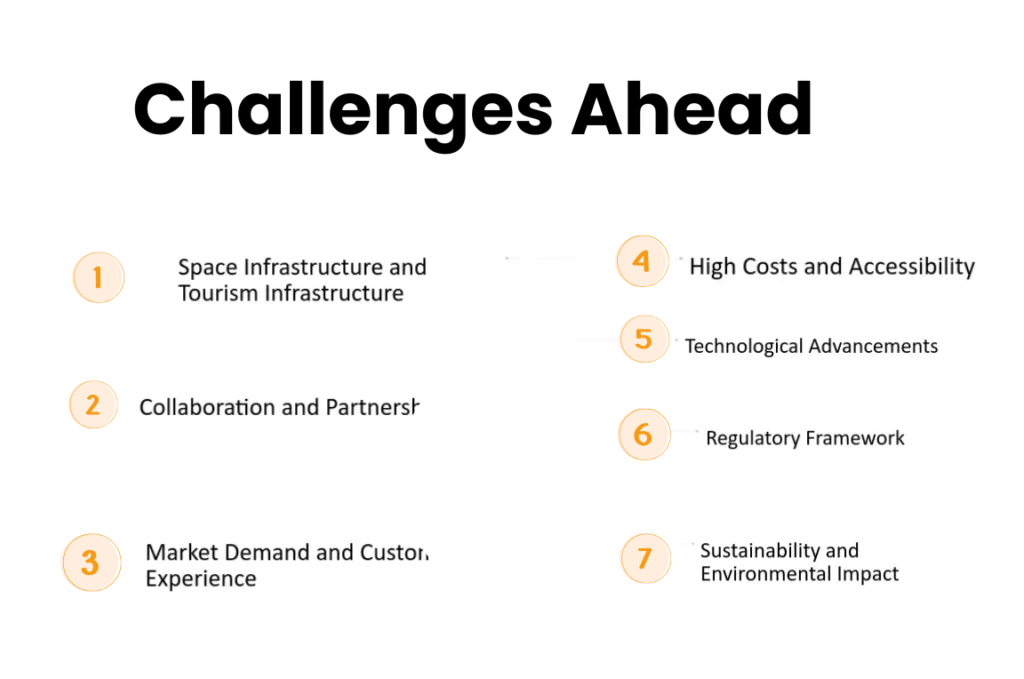Hi, space lovers! What was once a fantasy of only a few, space tourism has begun what many feel is its evolution to a more tangible reality through companies such as SpaceX. Being one of the most prominent private space expedition organization contenders, SpaceX has expanded more opportunities for the commoner to visit space.
Space tourism at this stage of development is yet to announce its destiny, specifically for SpaceX. In this article, we’ll learn about the recent breakthroughs in space tourism, SpaceX’s importance, and what the future of space travel might hold for space tourists.
Let’s dive in!
SpaceX and the Future of Space Tourism Commercial Travel
Emergence of Space Tourism

Space tourism is defined as any visit for recreational or business purposes by individuals in any capacity as professional astronauts. But when it might sound futuristic for some, space tourism has been ongoing for a few years, and different bodies have made it a reality.
Accordingly, Statista predicted that the segment of space tourism may be worth $3bn by the end of 2030, which suggests that consumers would use space tourism services differently from the contemporary mode.
Impact of Space Tourism and its Future
Launched in 2002 by Elon Musk, SpaceX is among the many active participants in the newly emerging commercial space industry. Focused on affordable space exploration and humanity’s colonization of planets, it has emerged as one of the key players in the market for space tourism.
SpaceX started exceptional operation in 2021 after it sent five members for Inspiration4 the citizen spaceflight. This space mission made possible by Space Florida is the future of a far bigger commercial space flying by Jared Isaacman. Unlike its previous, the Apollo missions were funded by the government. They had astronauts only, while the Inspiration4 missions crew was a group of civilians with no space experience and government support for the venture. This was a giant leap in making space more easily understandable and tangible to the average Joe on the street.
Dragon capsule manufactured by SpaceX was vital in the mission when the public got a hint that private firms could offer safe space launches and transport services for space enthusiasts and geeks. While Inspiration4 was a vital test flight, it was SpaceX’s first and tiny achievement toward its goal of launching a space tourism project.
Future of Space Tourism
While space tourism is also in the early stages at SpaceX, its goals are written all across its vessels. Elon Musk’s long-term goal, which SpaceX is operating towards, is the colonization of interplanetary space, leading to the commercial use of the Moon and Mars, among other places. Here’s what’s next for commercial space travel and SpaceX’s future role:
Suborbital Flights
- Such movements offer the possibility of several minutes of microgravity and views comparable to those obtained from the edge of space.
- SpaceX is concentrating on Starship may pass passengers a few miles high for amusement.
- Starships will be designed for orbital and suborbital travel, bringing the freedoms of space travel within the realm of feasibility for the average about-to-be tourist.
Space Stations and Hotels
- Suppose one could spend up to a couple of days isolated in space while gazing at the planet. This could become a reality due to the existence of other commercial space stations, such as Axiom Space and Bigelow Aerospace.
- These space stations could house tourists for cultural and entertainment, communication, scientific study, and even holidays in orbit.
- Currently, SpaceX will significantly contribute to providing travel services to the space stations through Crew Dragon and Starship.
Mars and Beyond
- Aaron Haupt points out that Elon Musk has set his vision on making space travel to Mars possible. SpaceX’s Starship is meant for time-spanning space travel.
- Mars tourism is not nearly easily attainable today, but SpaceX is slowly developing advanced technology to enable such missions.
- In the future, tourists who are already wealthy can take a trip to the Red Planet, yet such missions may be rare and extraordinarily costly.
- The following video explain about Future of Space Tourism:
Space Tourism Market Stats and Predictions
Space tourism will only grow with time, and experts agree it will expand rapidly. Market Research Future has published a report estimating that the global space tourism market will grow at a CAGR of 21.9% between 2021 and 2028. This growth is mainly due to new technologies developed, a decrease in the cost of space travel, and people’s increasing interest in space.
The Inspiration4 mission proved that there is a market for space tourism, and the other upcoming flights by Blue Origin and Virgin Galactic will attest to the fact. For example, The Space Review found that analysis of space tourism figures have come up with the prognosis that by the end of 2026, space tourism will be worth $1.7 billion for space travel with more than 100000 persons annually. Scientific data show that space tourism might be the next major thing since we realize that it is reasonably sure that the advancement of the space tourism market is yet to begin.
Challenges Ahead Safety and Sustainability

Despite all those positive messages, it is still possible to identify several challenges to the future of space tourism. Here are some of the key challenges:
Cost of Space Travel
Today, space tourism remains largely a preserve of the superrich. Suborbital flights could cost $250000 per passenger.
Starship, which SpaceX is developing, is expected to put space tourism at a more affordable price since the spacecraft will encourage the reuse of spacecraft.
Should this happen, more people will be able to fund their space-related trips, though the technology will be costly in the first few years.
Safety and Reliability
Exploring space is always dangerous. While SpaceX has an excellent safety record, space flight’s inherent dangers must be mitigated to accommodate civilians.
Dragon is an effective design for taking both astronauts and civilians intended for space travel; however, daily reports of occurrences suggest that some risks need to be mitigated with frequent technological advancements.
Environmental Impact
In this case, the emergence of space tourism is coupled with concerns about efficiency and environmental influence. Several years ago, no one thought that space would become crowded or that space organizations such as SpaceX and NASA would have to worry about not making space more crowded or dirty.
SpaceX is developing Musk’s Starship, which will replace the raw expendable launch vehicles, to address environmental concerns.
Conclusion
Space tourism began a long time ago, and thanks to companies such as SpaceX, traveling to space has become more of a reality. Despite these barriers, the development of space tourism is phenomenal! SpaceX has state-of-the-art spacecraft—the Starship and the Crew Dragon spacecraft—that are central to making space accessible to more people than just astronauts.
In the future, new prospects are even more numerous: suborbital flights, large space stations, and, as some believe, Mars and other planets within the scope of a generation. It may be apparent that there are no limits to the experience of space tourism.
FAQs
1. When will commercial space tourism be feasible and available for the citizens?
Spending on space tourism will likely reduce as technology advances and more private companies, such as SpaceX, build reusable craft. Compared to the current costs, suborbital flights could cost $200,000 a flight and drop to $50,000 in the next decade.
2. A space tourism ticket how much does it cost?
For instance, with Richard Branson’s Virgin Galactic, the price for a round-trip suborbital space flight is in the $250000 range. However, production costs are predicted to be the same as technology improves.
3. Is space tourism safe?
SpaceX also has a good safety record and is investing in enhancing its craft to meet passengers’ safety needs. Since space travel is already full of risks, steady improvements are being achieved with technology.
4. What will future destinations for space tourists be?
In the short term, suborbital flights will deliver the feeling of being in space, with ample views of Earth. SpaceX’s grand plan is to offer soon trips to the space station, the Moon, and eventually Mars, once technology advances and costs are reduced. Soon-to-be space tourism spots could be space stations and lunar bases.





